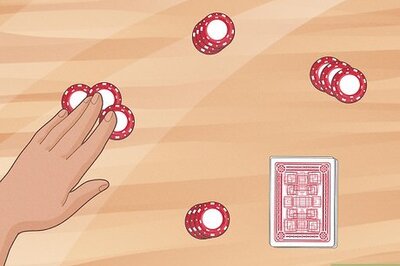
views
window._taboola = window._taboola || [];_taboola.push({mode: 'thumbnails-a', container: 'taboola-below-article-thumbnails', placement: 'Below Article Thumbnails', target_type: 'mix' });Latest News
A typical day in the life of a Chennaiite begins with a cup of filter kaapi, sweets when greeted by a colleague with good news, thirst quenching lemonade on a hot summer afternoon, a health drink to energise in the evenings and dessert to complete every meal.
Can you imagine your day with a controlled intake of sugar? Gear up for a bitter festive season this year as sugar prices are rising steadily.
The increased prices have been attributed primarily due to the decrease in production of the sugarcane crop, due to scanty rainfall. This is complimented by the excessive export of sugar.
Wholesalers feel that with the increase in prices of sugar, farmers will not hesitate to switch over to other crops such as rice.
“On an average at least 1,000 sugarcane crops are grown on one acre of land, but to due to less rainfall, only 500 crops are grown. Now, two possible outcomes are that farmers will start increasing rates or simultaneously switch over to other crops., ” says S P Soruban, chief of the Grocery Trader’s Sangam.
Sugar being an essential commodity and a necessity, comes directly under the Directorate of Sugar, and can only be released and sold on the directive of the Food and Agriculture Ministry.
“It is only with the nod of the Food Ministry that a specified amount of sugar can be produced by a sugar mill, which then reaches the wholesaler, retailer and finally the consumer,” says Soruban.
He adds that there is cap on the amount of sugar that can be held by a wholesaler or a retail store at a given point. Even with such checks and balances in place, the rampant sugar price rise has not been curbed.
In view of the festival season ahead, traders expect the demand to increase. Today, the price of sugar in the wholesale market is Rs 37 per kilo.
Wholesalers emphasise that in spite of a rising demand which is not met by adequate supply, the export rate is steady and increasing.
Sugar traders in the city also attribute consumption and heavy forward buying to huge multi-national companies, whose products’ core ingredient is sugar — such as colas, biscuits and toffees. Poor output coupled with increased demands has been a contributing factor to the steady rise in prices.
S Ramesh, a wholesale dealer in sugar, opined that with an annual production, a prescribed amount of surplus is allowed to be exported. However, the Central Government instead resorts to exporting more than required. This, he felt, directly results in decreasing the amount of sugar to be released within the country. Such factors are bound to hit the consumer.
One, it leads to increase in price of sugar and two, increase in price of products which contain sugar as a major ingredient.
Adds Ramesh,“Farmers produce sugarcane between December and June and then supply it to the sugarmills, the retailers sell sugar at Rs 41 per kilo to the consumers, so there is an obvious pinch of price rise.”
With all of us wanting a end every meal with a sweet, hope is all one can do for a stable price of chakkarai.




















Comments
0 comment